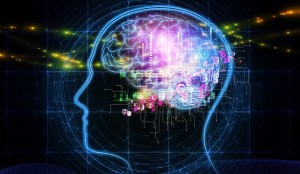Plagues of the Heart and Mind (Part 1)
By Sara Esther Crispe: December 30, 2013: Category Decoding the Tradition, Inspirations
Introduction
 How many times have you been told to follow your heart? It sounds romantic but is pretty awful advice. Let’s face it…what the heart wants the heart wants. But what the heart wants is not necessarily what is healthy or good for us. After all, the heart doesn’t think…it only feels. And while it is nice to say, “if it feels good, do it…” then what happens when it no longer feels good?
How many times have you been told to follow your heart? It sounds romantic but is pretty awful advice. Let’s face it…what the heart wants the heart wants. But what the heart wants is not necessarily what is healthy or good for us. After all, the heart doesn’t think…it only feels. And while it is nice to say, “if it feels good, do it…” then what happens when it no longer feels good?
There is a reason we were created with our head, our mind, above our heart. It is not that there is no place for feelings and emotions, but they shouldn’t ultimately determine our decisions. They need to be aligned with the mind, they need to support what the intellect is telling us. When we think something is the right thing to do, and we also feel that we want it, then we should absolutely go for it. But if it feels right when our mind has the sirens blaring, it is time to step back and re-think. Not re-feel but truly re-think.
Our emotions are far more powerful than our intellect. Once someone has his or her heart involved, it is almost impossible to be rational, intellectual, practical in dissuading what feels right. Don’t believe me? I bet you know someone who is in an unhealthy relationship. Perhaps even an abusive one. Now this person is not stupid. He or she doesn’t think that it is appropriate to be mistreated. But somehow this person rationalizes that it is either deserved or manageable or preventable. Ask this person to write a list of all the reasons he or she has for why the relationship should end. No doubt there will be some very convincing and supporting reasons why it is not healthy. Then ask this person to create a list of why he or she should stay. I am going to bet that list will be significantly shorter. However, if “I love him/her” is on that list…game over. That is all that is needed. You see, it is not that this person thinks it is a healthy relationship. It is that his or her heart is already invested which means the brain doesn’t stand much of a chance.
In Kabbalistic philosophy we are taught that there are 10 foundational aspects within every human being, 3 intellectual and 7 emotional. These are called the sefirot and like the body, the properties of the mind precede those of the heart. The number of 10 is also very significant with the main connections being the 10 utterances that create the world according to Jewish Mysticism, the 10 plagues that struck the Egyptians and prompted our redemption from our slavery in Egypt and the 10 Commandments given to the Jewish people at Mt. Sinai which was the culmination of our freedom.
The founder of the Chassidic movement, the Baal Shem Tov, taught that embedded within development and growth is a 3-stage process that one should go through. The first is a state of ‘submission’ which is referred to as hach’naah. The second stage is that of ‘separation’ which is known as havdalah and the final and goal of the process is that of hamtakah which is ‘sweetening.’
On an emotional/psychological level we can understand this as the first step in overcoming a situation is removing one’s ego, and recognizing that one’s sense of importance is not the focus. This is true humility. Humility is not thinking less of oneself, but thinking of oneself…less. The temporary removal of self from the situation allows one to view it in a different light and makes room for the other.
The next level is that of separation. In order to truly view this situation from a different perspective, we must ensure that we are not entwined within it. This ability to try to be objective from something subjective gives us the opportunity to see the inherent differences in perspective. Only once ego has been removed, and there has been some separation is one ready to come back to the situation and sweeten it.
This 3-stage process is also at the core of the 3 times the number 10 appears most dominantly in our history. As our Creator created the world, we are taught that everything came into being through His speech. “Let there be light” and there was light. As He commanded reality, reality formed. The Baal Shem Tov teaches that the purpose of the 10 Utterances was for us to recognize the existential equality in all of creation. Even though there are four kingdoms (mineral, vegetable, animal and human) the common denominator amongst them all is that we were all created by our Creator with a specific purpose and mission to fulfill in this world. While there is one view that the human kingdom is the highest of the four as we are most developed, the opposite can be seen as well. It is because we were endowed with free choice that we have the ability to go against our purpose and not fulfill what we are intended to do whereas the rock or the plant do not negate their mission. The 10 Utterances therefore represent the level of submission, in which we recognize that on a base and foundational level we are all the same in all four kingdoms.
The intermediary level is therefore that of the 10 Plagues. The 10 Plagues serves as a reminder that when we need to simultaneously recognize what we share in common and how we are unified and also that there are differences that must be acknowledged. There are aspects in life that are healthy, positive and productive and those that are the opposite. There is what enhances and creates life and that which seeks death. Egypt represents constriction (mitzrayim = meitzar) and negativity. We must seek out and destroy that which seeks to destroy us. When something is negative it must be recognized as such so that we know to stay away from it. There are distinctions and differences in life and the 10 Plagues is the reminder of that and the level of separation that must take place in order for there to be true freedom and redemption. For only one that knows what slavery is can even appreciate or recognize when he or she is free.
The final level and ultimate goal is then that of sweetening which is represented by the 10 Commandments. The 10 Commandments is when we come together as a people and are empowered to make conscious choices in what we do and do not do in order to fill our individual and universal mission in this world. Only with an awareness that comes from recognizes what connects us and what separates us are we ready for this level of freedom and responsibility that was the result of the 10 Plagues which culminated in our release from being slaves in Egypt.
The 10th letter of the Hebrew alphabet is a yud and it is the smallest of the Hebrew letters and hovers in the air, higher than most of the other letters in the alphabet. Yet while smallest, it also exists in each and every letter. One of the laws of writing a Torah scroll is that every letter must begin with the drawing of the yud and then is elongated into the different letters. It is the idea that inherent and embedded in all the letters and therefore all of creation (as the letters are the building blocks of creation) exists this ten comprised of the 3 intellectual aspects and 7 emotive aspects.
 And yet, when it comes to the plague, it is all turned around. That is, in and of itself, a plague. When the emotions rule over the intellect that is a foundational punishment that will affect everything that follows. This is why in the Torah we first read of the 7 (emotional) plagues in the Torah portion of Va’era followed by the final 3 (intellectual) plagues in the following Torah portion of Bo. And even more directly, the beginning of the portion of Bo beings with the declaration of G-d to Moses that “I have hardened his heart and the heart of his servants” (Bo, 10:1) in reference to Pharaoh. It is not that G-d had Pharaoh change his mind or think differently, but rather, that my hardening his heart and playing with his emotions, Pharaoh made decisions that were not intellectually sound but were based solely on how he felt, which ultimately led to the death and destruction of the Egyptian people and the redemption of the Jewish people.
And yet, when it comes to the plague, it is all turned around. That is, in and of itself, a plague. When the emotions rule over the intellect that is a foundational punishment that will affect everything that follows. This is why in the Torah we first read of the 7 (emotional) plagues in the Torah portion of Va’era followed by the final 3 (intellectual) plagues in the following Torah portion of Bo. And even more directly, the beginning of the portion of Bo beings with the declaration of G-d to Moses that “I have hardened his heart and the heart of his servants” (Bo, 10:1) in reference to Pharaoh. It is not that G-d had Pharaoh change his mind or think differently, but rather, that my hardening his heart and playing with his emotions, Pharaoh made decisions that were not intellectually sound but were based solely on how he felt, which ultimately led to the death and destruction of the Egyptian people and the redemption of the Jewish people.
So then it is vital that we understand what these 10 plagues were, what the represent and how lessons from them can be applied to our day-to-day lives.
In Part Two we will explore the first of the 7 plagues that relate to our emotional characteristics.
http://www.interinclusion.org/inspirations/plagues-of-the-heart-and-mind-part-2/
Plagues of the Heart and Mind (Part 1),























;)
;)
;)
;)
;)
;)
;)
;)
;)
;)

This is great. Was asking this question on Shabbas- how are the first 7 plauges different from the last 3 & why are they separated into 2 separate torah readings! Now I have an answer.
How eloquently explained. Great time of year to read this!